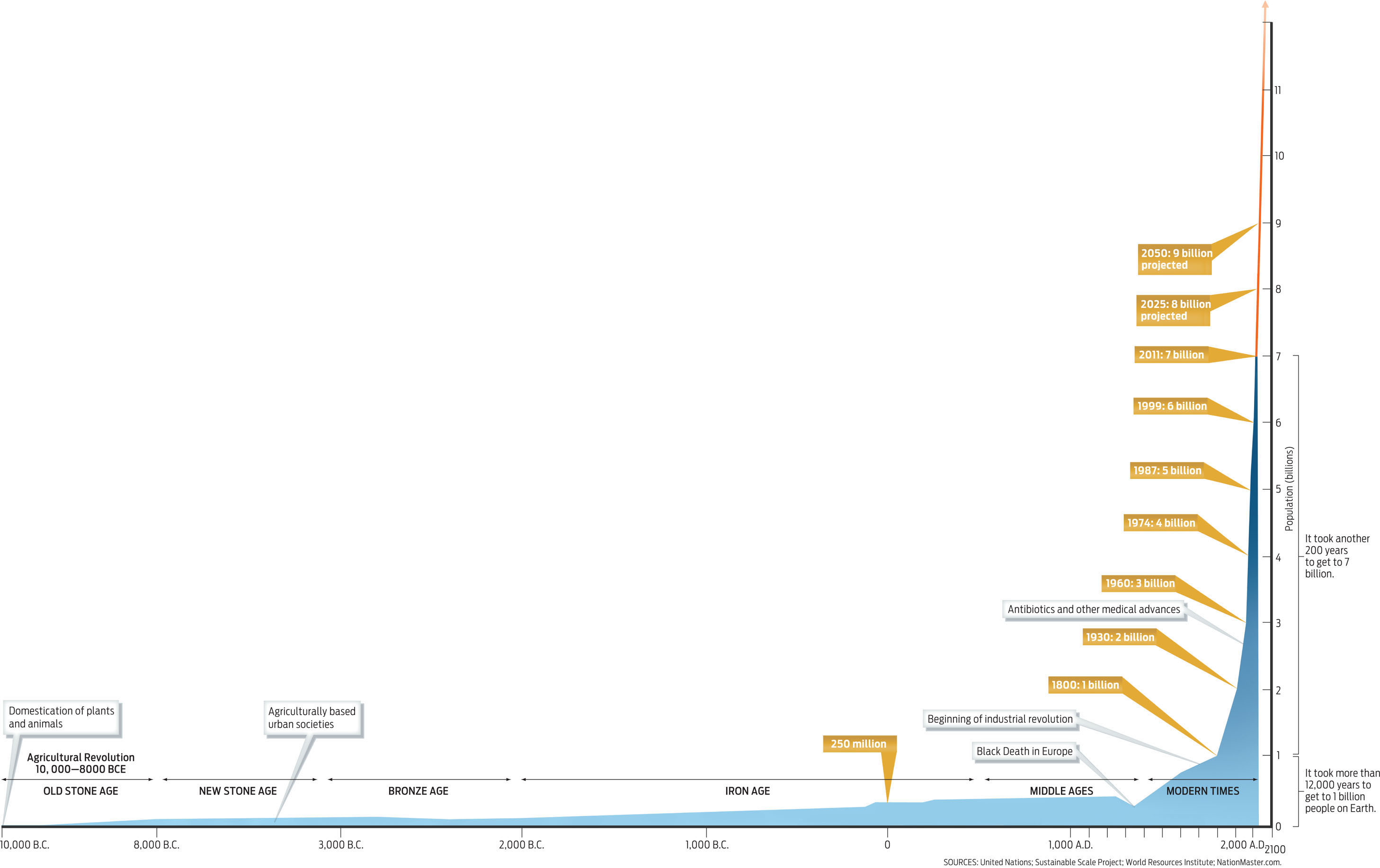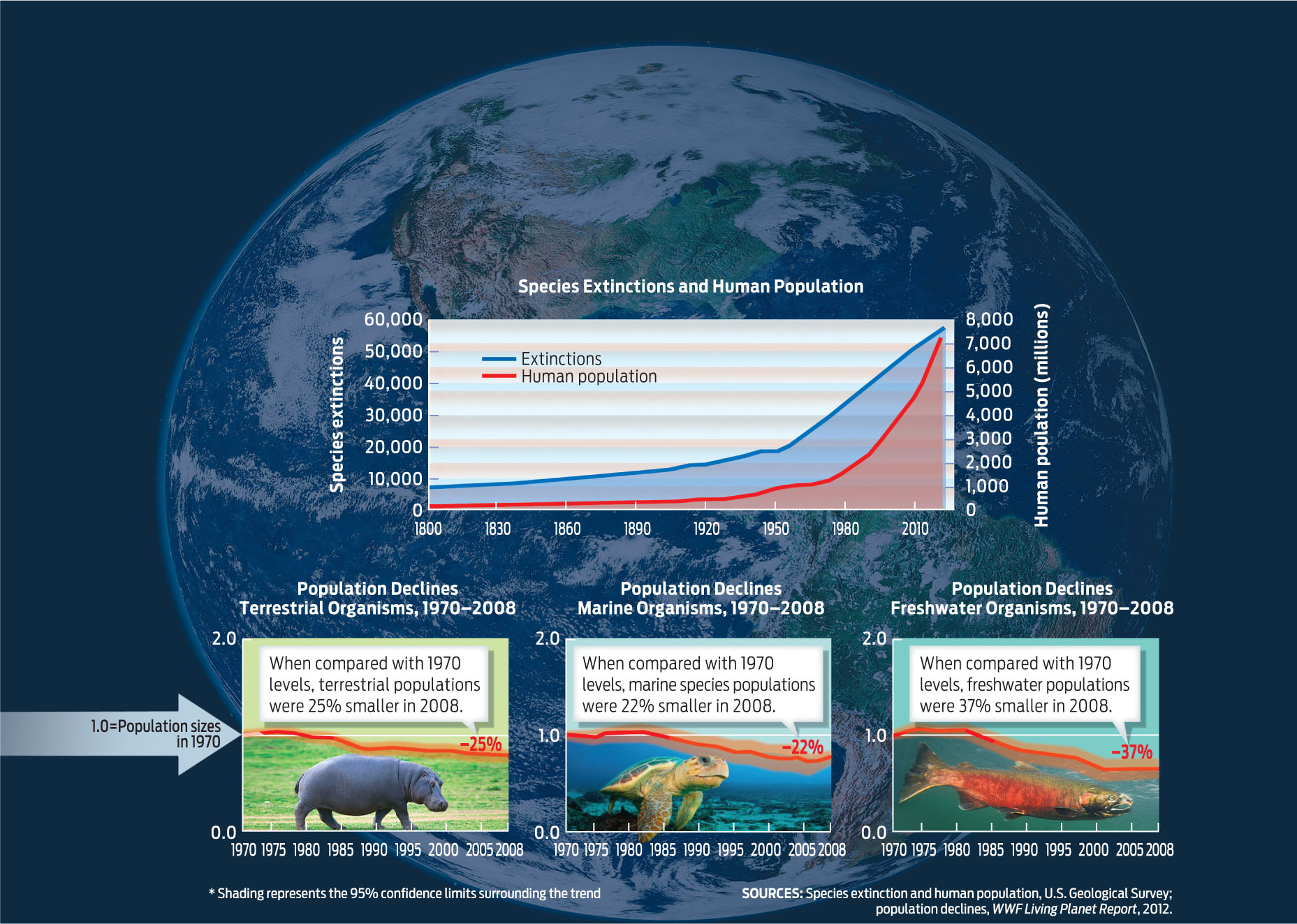GREEN LIKE US
With a population of about 900 people, what this small town does to conserve resources may seem insignificant. But green becomes meaningful when you consider how lifestyle choices affect resource use when employed by people in a whole state, country, or even the whole planet.
Two thousand years ago, there were roughly 300 million people on Earth, less than the current population of the United States alone. In 2012, there were 7 billion people. Much of that growth has occurred since 1950, thanks in large part to antibiotics and advances in public health that have allowed many of us to live longer. And each hour more than 10,000 new people are added to the planet. By 2050, demographers estimate, we’ll hit the 9 billion mark (INFOGRAPHIC 24.5).
Since the advent of agriculture, the human population has been following an exponential growth pattern, reaching 7 billion people in 2011. Some estimate that the human population will reach 9 billion by 2050.


BIODIVERSITY The number of different species and their relative abundances in a specific region or on the planet as a whole.
With every person added to the planet, Earth’s pie of resources is divided into smaller and smaller slices. Moreover, as the human population grows, so does our impact on the other species. Ecologists have documented a striking correlation between the rise in human population and loss of biodiversity as species decline in numbers and eventually become extinct. The principal causes of these losses include habitat destruction and overconsumption. Faced with the prospect of 2 billion more people in the coming years, the world is badly in need of new ways of living within Earth’s biocapacity (INFOGRAPHIC 24.6).
As the human population increases, so does the number of species lost to extinction. The causes for this include habitat destruction, pollution, spread of disease and overconsumption. Similarly, many wildlife populations are declining.

533
What Greensburg lacks in size, it is hoping to make up for in visibility and daring. It seeks to be a model for other towns and cities across the country, and indeed the world, to emulate.
In a speech to Congress in 2009, President Obama echoed this view, describing Greensburg as “a global example of how clean energy can power an entire community, how it can bring jobs and businesses to a place where piles of bricks and rubble once lay.”
Already, the city is attracting international attention. In 2012, a group of architects from tsunami-ravaged areas of Japan came to Greensburg to learn about building sustainable infrastructure. And many of the strategies enacted by Greensburg are being used to design and build ecocities around the world in countries as diverse as Argentina, Australia, Finland, and Vietnam.
A revitalized Greensburg suddenly finds itself serving as the poster child for a sustainability movement that seems at times to be facing an uphill battle.
534